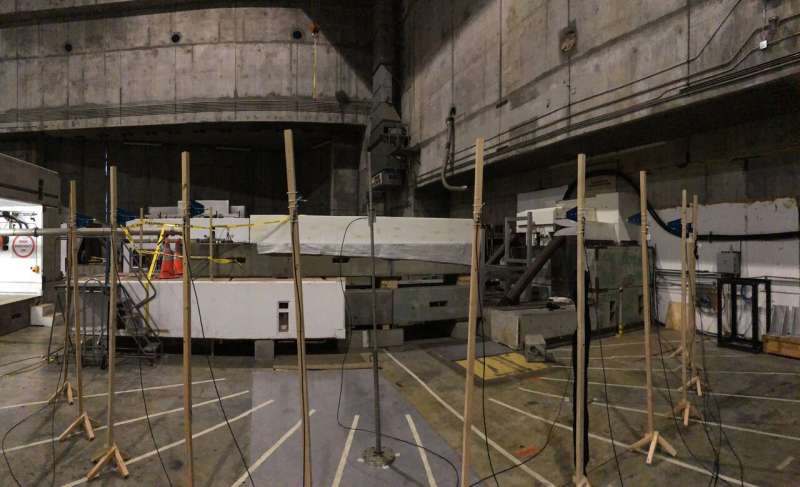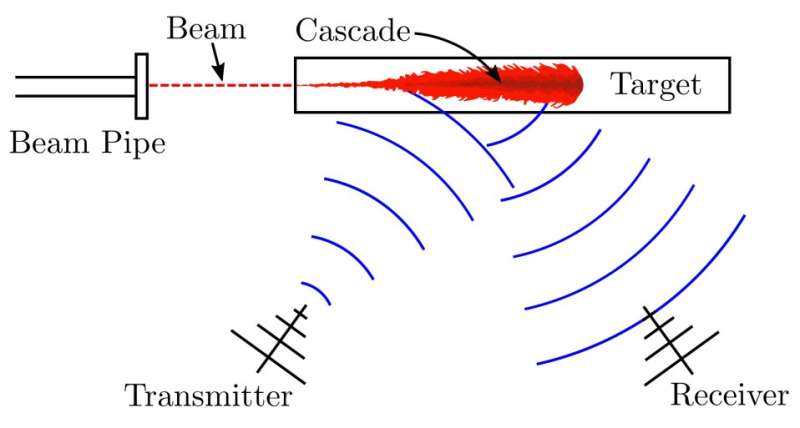Radio waves detect particle showers in a block of plastic

When neutrinos crash into water molecules in the billion-plus tons of ice that make up the detector at the IceCube Neutrino Observatory in Antarctica, more than 5,000 sensors detect the light of subatomic particles produced by the collisions. But as one might expect, these grand-scale experiments don't come cheap.
In a paper recently accepted by Physical Review Letters, an international team of physicists working at the Department of Energy's SLAC National Accelerator Laboratory demonstrated an inexpensive way to expand IceCube's neutrino search.
The researchers directed an electron beam diverted from SLAC's Linac Coherent Light Source (LCLS) into a large block of plastic to mimic neutrinos colliding with ice. When a neutrino interacts with ice, it produces a cascade of high-energy particles that leave a trail of ionization in their wake. The same is true for electron collisions in the plastic.
To detect those ionization trails, the team used an antenna to bounce radio waves off them. This created radar echoes that were picked up by additional antennas. It was the first time researchers have been able to detect radar echoes from a particle cascade.
These echoes carry information about neutrinos in an energy range that could bridge the gap between the lower-energy neutrinos that IceCube detects and the higher-energy neutrinos detected by other in-ice and balloon-based detectors. To follow up, the researchers hope to use a similar set-up to detect neutrinos with a radio echo in Antarctic ice. If successful, the technique could eventually allow researchers to expand the energy reach of IceCube without breaking the bank.

More information: S. Prohira, et al. Observation of Radar Echoes From High-Energy Particle Cascades. arXiv:1910.12830v1 [astro-ph.HE]: arxiv.org/abs/1910.12830 , journals.aps.org/prl/accepted/ … 953e304783fca5b4d159
Journal information: Physical Review Letters
Provided by SLAC National Accelerator Laboratory




















